
Lieutenant-Colonel Sir Matthew Nathan was a British soldier and colonial administrator, who variously served as the governor of Sierra Leone, Gold Coast, Hong Kong, Natal and Queensland. He was Under-Secretary for Ireland from 1914 to 1916, and was responsible, with the Chief Secretary, Augustine Birrell, for the administration of Ireland in the years immediately preceding the Easter Rising.
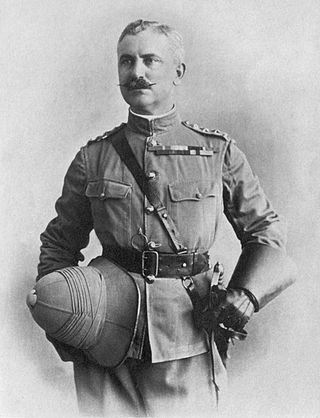
General Sir Francis Reginald Wingate, 1st Baronet, was a British general and administrator in Egypt and the Sudan. He earned the nom de guerre Wingate of the Sudan.

Field Marshal William Gustavus Nicholson, 1st Baron Nicholson, was a British Army officer who served in the Second Anglo-Afghan War, the Mahdist War, the Third Anglo-Burmese War, the Second Boer War and the First World War. He became Chief of the Imperial General Staff and was closely involved in the reorganisation of the British Army in the early years of the 20th century.

Brigadier-General Sir Dalrymple Arbuthnot, 5th Baronet, CMG, DSO, JP was a British baronet and Army officer.
Clive Wigram, 1st Baron Wigram, was a British Indian Army officer and courtier. He was Private Secretary to the Sovereign from 1931 to 1936.
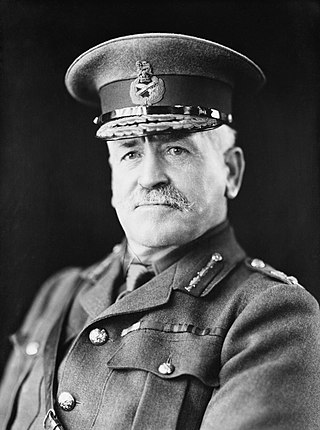
General Sir Charles Carmichael Monro, 1st Baronet, was a British Army General in the First World War. He held the post of Commander-in-Chief, India in 1916–1920. From 1923 to 1928 he was the Governor of Gibraltar.
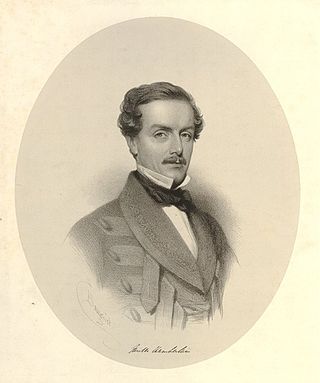
Field Marshal Sir Neville Bowles Chamberlain was a distinguished British military officer in British India. He served in the Bengal Army and saw action in the First Anglo-Afghan War, Gwalior campaign, Second Anglo-Sikh War, Indian Rebellion, Ambela campaign and Second Anglo-Afghan War. He later became Commander-in-chief of the Madras Army.

Colonel Sir James Gildea, was a British Army Militia officer and philanthropist who founded the Soldiers', Sailors' and Airmen's Families Association.

General Sir John Grenfell Maxwell, was a British Army officer and colonial governor. He served in the Mahdist War in the Sudan, the Second Boer War, and in the First World War. As Commander-in-Chief, Ireland, he played a key part in the response to the 1916 Easter Rising, including overseeing the courts-martial after the rebellion. Maxwell retired in 1922.
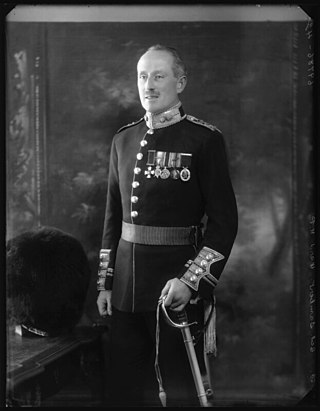
Sir Albert Lambert Ward, 1st Baronet, was a volunteer soldier in the Territorial Force and a Conservative Party politician in the United Kingdom.

Field Marshal Sir Arthur Arnold Barrett, was a British officer of the Indian Army. He saw action at the Siege of the Sherpur Cantonment in December 1879 and at the Battle of Kandahar in September 1880 during the Second Anglo-Afghan War and went on to serve in the Hunza-Nagar Campaign in 1891. During the First World War he was General Officer Commanding the Poona Division which successfully took Basra in Mesopotamia in November 1914 and then Al-Qurnah in Mesopotamia in December 1914. He spent the rest of the War commanding the Northern Army in which role he took part in operations against the Mahsuds in Spring 1917. He saw action again as the senior British officer on the ground during the Third Anglo-Afghan War in 1919 before retiring in May 1920.
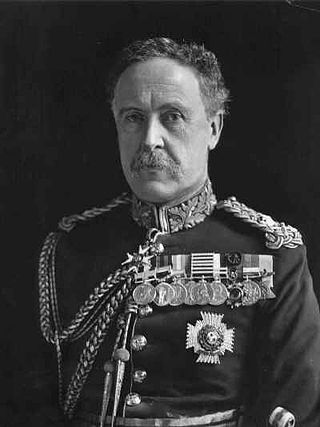
General Sir Neville Gerald Lyttelton, was a British Army officer from the Lyttelton family who served against the Fenian Raids, and in the Anglo-Egyptian War, the Mahdist War and the Second Boer War. He was Chief of the General Staff at the time of the Haldane Reforms and then became Commander-in-Chief, Ireland.

Sir Bryan Thomas Mahon, was an Irish general of the British Army, a senator of the short-lived Senate of Southern Ireland, and a member for eight years of the Irish Free State Senate until his death.

General Sir William Eliot Peyton, was a British Army officer who served as Military Secretary to the British Expeditionary Force from 1916 to 1918. He was Delhi Herald of Arms Extraordinary at the time of the Delhi Durbar of 1911.

Brigadier-General Sir Douglas Frederick Rawdon Dawson was a British Army general officer and courtier.
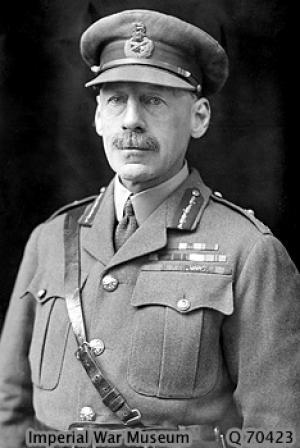
Lieutenant General Sir George Frederick Gorringe, served as an active field commander in the British Army during the Anglo-Boer War and the First World War, on the Palestine and Western Fronts.
Major-General William Henry Muir Lowe was a British Army officer who commanded the British forces in Dublin during the Easter Rising of 1916 and received the surrender of the Irish republican forces.
Major-General Sir Charles Edward Callwell, was an Anglo-Irish officer of the British Army, who served in the artillery, as an intelligence officer, and as a staff officer and commander during the Second Boer War, and as Director of Operations & Intelligence during World War I. He was also a noted writer of military biography, history, and theory.
The Royal Households of the United Kingdom consist of royal officials and the supporting staff of the British royal family, as well as the Royal Household which supports the Sovereign. Each member of the Royal Family who undertakes public duties has their own separate household.
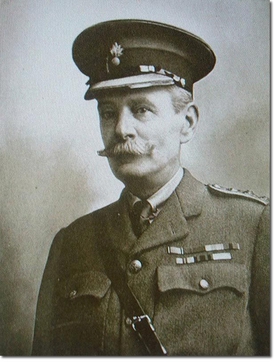
Colonel Sir Henry Streatfeild, GCVO, CB, CMG, JP, DL (1857–1938) was a British Army officer and courtier who served as the commanding officer of the Grenadier Guards, and was Equerry to Edward VII from 1908 until the King's death in 1910. He was then Private Secretary and Equerry to Queen Alexandra from 1910 until her death in 1925.

















